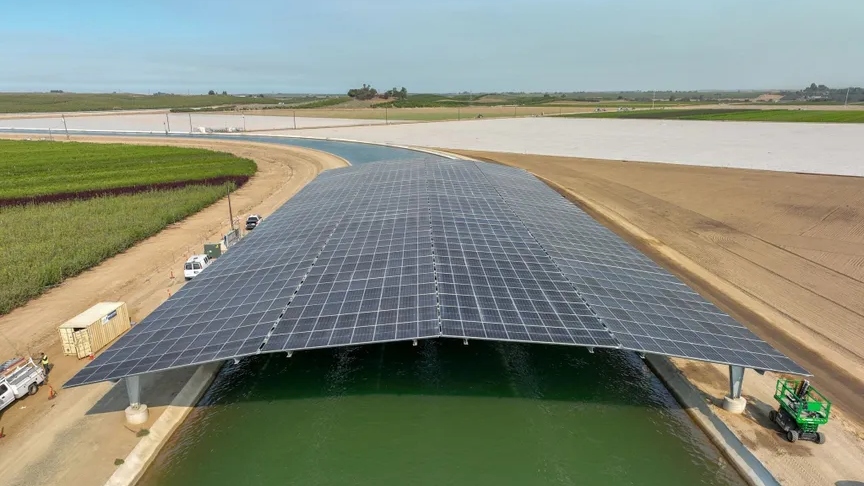Now Reading: California Launches First Fully Operational Solar-Powered Canal
-
01
California Launches First Fully Operational Solar-Powered Canal
California Launches First Fully Operational Solar-Powered Canal

Quick Summary
- California launched Project Nexus, a $20 million state-funded solar canal initiative in its Central Valley, generating 1.6 megawatts of clean energy.
- solar panels installed over canals reduce water evaporation, limit algae growth, and enhance panel efficiency by keeping them cool.
- Placing solar arrays on existing infrastructure avoids land disturbances and community opposition associated with utility-scale projects.
- Project Nexus will power canal equipment like pumps and gates while being monitored for long-term performance to assess broader adoption viability.
- The Gila River Indian Community (Arizona) pioneered the U.S.’s first solar-canal array in 2024; similar initiatives have started globally but remain technically complex and expensive.
- Estimates suggest U.S. canals could produce over 25 gigawatts of renewable energy annually if widely adopted – enough to power ~20 million homes – while conserving water resources.
Indian Opinion Analysis
India’s agricultural sector heavily relies on irrigation systems spanning massive canal networks.The innovations seen in California’s Project Nexus offer promising implications for India’s ongoing clean energy transition. Adopting such technology could serve dual purposes: mitigating water scarcity by reducing evaporation and supplementing national renewable energy commitments without additional land usage-a critical advantage given India’s densely populated regions.
However,upfront costs remain prohibitive,as noted by Project Nexus developers and similar efforts elsewhere globally. Technical challenges involving structural requirements may further delay implementation at scale or make it less attractive absent strong subsidies or policy support comparable to California’s state funding model.
For India, this provides an opportunity for deeper exploration into pilot projects tailored around its unique climate conditions and socio-economic priorities-especially in drought-prone states like Rajasthan or maharashtra where irrigation demand aligns directly with solar potential. National research institutions must collaborate with global experts to contextualize these learnings effectively within India’s framework for lasting progress goals.



























